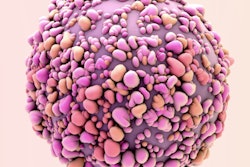Wednesday, November 30 | 9:30 a.m.-10:30 a.m. | W3-SSBR08-6 | Room E451B
The utility of digital breast tomosynthesis (DBT) as a "safety net" in breast cancer screening will be discussed in this presentation, including its impact on cancer outcomes.In his talk, Dr. Ted Goh from Boston University will show results of his team's study, which compared the performance of DBT with full-field digital mammography in a hybrid screening environment. The researchers analyzed data from 26,250 matched screens, including 13,125 digital mammograms and 13,125 DBT exams performed in 16,060 women.
The study authors found lower recall rates for DBT at 12.1% compared with 14.7% seen in digital mammography. They also found higher specificity for DBT at 88.1% versus 85.7% for mammography. Both data points were statistically significant.
What's more, recall rates and specificity improved with DBT when stratifying women by age group (40-49, 50-59, and 60-69), fatty to heterogeneously dense breast density categories, and baseline exams.
The team also noted no significant differences in cancer detection rate, interval cancer rate, sensitivity, or positive predictive value between groups. Additionally, most invasive and in situ cancers were identified in Black women (50%). The authors noted that about 70% of these were detected by mammography screening.
They also wrote that their findings highlight racial disparities in cancer screening outcomes, though DBT's benefits can be found in underserved "safety-net" patient settings. Find out more in this session.




















